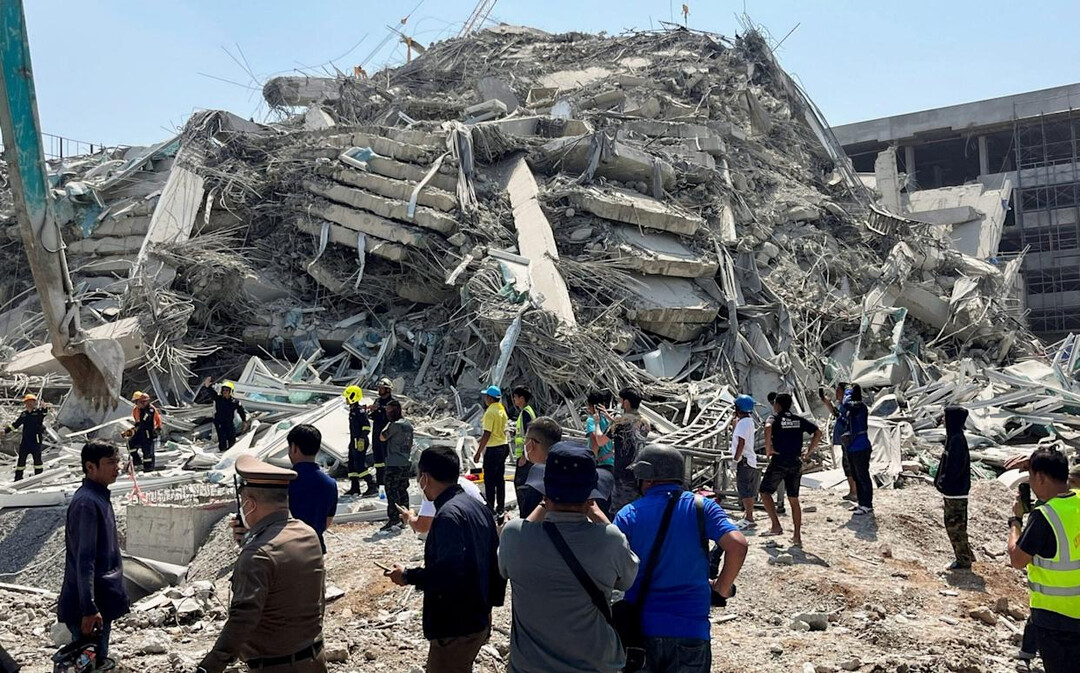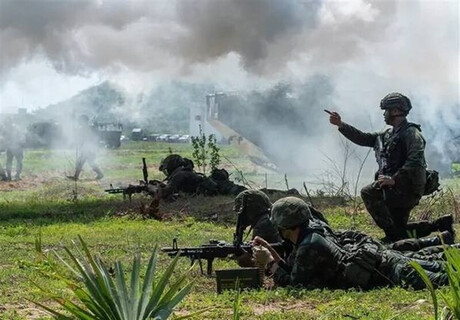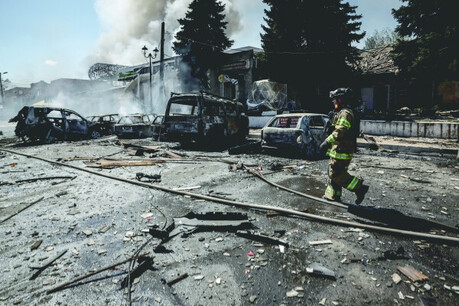
Monywa, Myanmar - A catastrophic magnitude 7.7 earthquake struck central Myanmar on Friday, March 28, 2025, unleashing widespread devastation and claiming the lives of over one thousand people across Myanmar and neighboring Thailand. The powerful tremor, with its epicenter located approximately 50 kilometers east of Monywa, has also left thousands injured and displaced, triggering a massive humanitarian crisis and significant disruptions to travel and commerce throughout the region. A strong aftershock of magnitude 6.4 followed shortly after, exacerbating the damage and hindering initial rescue efforts.
Myanmar Bears the Brunt of the Disaster:
Myanmar has suffered the most severe impact, with the current death toll exceeding 1,000 and over 2,400 reported injuries, according to the latest reports. The earthquake caused extensive damage to infrastructure, including the collapse of numerous buildings, religious sites, and critical transportation links.
Mandalay: The country's second-largest city has been heavily affected. Mandalay International Airport sustained structural damage, including collapsed ceilings and damage to the basement, leading to the suspension of all flights. Tragically, the air traffic control tower at Naypyidaw International Airport also collapsed, resulting in fatalities among aviation personnel. Historic sites in Mandalay, such as parts of the Mandalay Palace and ancient walls, have also been damaged. A significant loss is the collapse of the iconic Ava Bridge, a vital road and rail link over the Irrawaddy River connecting Mandalay and Sagaing. This collapse severs a crucial artery for tourism, trade, and logistics in northern Myanmar. Multiple buildings at Mandalay University collapsed or caught fire, trapping many inside. Several mosques in the city collapsed during prayer time, resulting in numerous casualties. A two-story tea shop collapse trapped around 70 people, and a car accessories store also crumbled, trapping employees.
Naypyidaw: The capital city also experienced significant damage. Roads buckled, and ceilings partially collapsed in numerous buildings. Several government buildings, including parts of the Foreign Ministry and the Ministry of Labour, suffered heavy damage or collapsed entirely. A major hospital in Naypyidaw declared a "mass casualty zone" as it received hundreds of injured individuals, including many who succumbed to their injuries.
Sagaing Region: The region surrounding the epicenter has witnessed widespread destruction. In Sagaing Township, a high-rise building collapsed, claiming lives, and the historic Ava Bridge also fell. Multiple mosques in Sagaing City were destroyed.
Shan State: In Nyaungshwe Township, particularly around Inle Lake, dozens of deaths were reported, and over 100 homes were destroyed. Pagodas in the area also sustained damage. A hotel in Aungban collapsed, resulting in fatalities and trapping many others.
Bago Region: A school collapse in Taungoo Township tragically killed several children, and a collapsing mosque claimed more lives. Another school serving as a shelter also collapsed, trapping over 20 people.
In a rare acknowledgment of the crisis's magnitude, Myanmar's ruling junta has appealed for international assistance. Hospitals are overwhelmed, and rescue teams, composed of local volunteers and emergency services, are struggling to reach all affected areas. International aid organizations are attempting to navigate bureaucratic hurdles to provide much-needed support.
Thailand Reels from Tremors and Structural Failure:
The powerful earthquake sent shockwaves across the border into Thailand, causing panic and damage, particularly in Bangkok.
Bangkok: The capital city witnessed significant disruption and structural failure. High-rise buildings swayed dramatically, leading to widespread fear. Tragically, an under-construction skyscraper in Bangkok collapsed during peak working hours, trapping and killing construction workers. Rescue operations are ongoing to find those still missing in the rubble. Public transportation, including the BTS Skytrain and MRT subway, was temporarily suspended for safety inspections. Several commercial complexes and hotels were also temporarily closed. Suvarnabhumi Airport experienced a brief closure for safety checks but has since resumed operations.
Regional Impact: Tremors were felt in other parts of Thailand, including Chiang Mai and Khon Kaen, where the airport temporarily suspended flights. Train services to the north and northeast of Bangkok also faced temporary disruptions.
Thai Prime Minister has urged calm and assured the public that infrastructure assessments are underway. The Tourism Authority of Thailand has activated an emergency response unit to assist tourists.
Impact on Travel and Tourism:
The earthquakes have severely impacted the travel and tourism industries in both Myanmar and Thailand.
Air Travel: Mandalay International Airport is currently non-operational due to structural damage. While Suvarnabhumi Airport in Bangkok has reopened, airlines experienced significant disruptions in the immediate aftermath, including flight diversions and delays. Passengers are advised to check with their airlines for the latest updates and rebooking options. Airlines such as Cathay Pacific and Malaysia-based carriers have issued advisories and are monitoring the situation closely.
Ground Transportation: The collapse of the Ava Bridge in Myanmar has severely hampered ground travel to key tourist destinations like Mandalay and Bagan. Road damage in various regions is also affecting accessibility. In Bangkok, while public transport has largely resumed, some disruptions may still occur.
Tourism Activities: Tour operators in Upper Myanmar have suspended operations indefinitely. The Myanmar Tourism Federation has advised tourists to avoid affected provinces. Travel agencies in Bangkok are adjusting or suspending high-rise dining, rooftop tours, and river cruises. Hotels are implementing emergency protocols.
Regional Travel: Neighboring countries, including Laos, Vietnam, and parts of China, also felt mild tremors, raising concerns about cross-border travel. Increased scrutiny at border checkpoints is expected.
International Response and Recommendations for Travelers:
Several countries have issued updated travel advisories for Myanmar and Thailand, urging citizens to avoid non-essential travel to affected areas. Emergency hotlines have been activated for nationals in the region. Travelers are advised to:
Stay updated on airline notifications and local news.
Contact airlines directly for flight status and rebooking options.
Monitor travel advisories from governments and international organizations.
Ensure their travel insurance covers disruptions and emergencies related to natural disasters.
The devastating earthquakes serve as a stark reminder of the region's seismic vulnerability and the far-reaching consequences of such natural disasters on human lives, infrastructure, and the global travel network. Recovery efforts are expected to be extensive and will require significant international cooperation.
[Copyright (c) Global Economic Times. All Rights Reserved.]






























